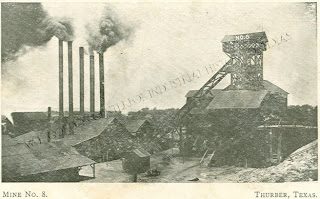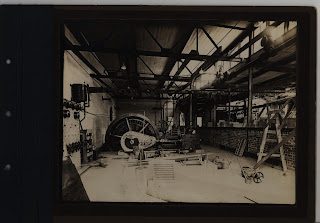The History of Thurber in 12 Photographs: Cultivating Minds in a Company Mining Town

Cultivating Minds in a Company Mining Town
February is often affiliated with the concept of love, whether it is through loving significant other or ourselves on Valentine’s Day, or by loving our fellow man by recognizing Martin Luther King Day. This month let us focus on loving education and being thankful for the opportunity to teach and be taught by others. The town of Thurber was not only for the men of the mines and brick plants.

In 1906, a new public school was built south of the new Thurber Main Street with the financial support of the Texas Pacific Coal Company. TP provided the school building and ensured the funds to employ teachers and meet educational standards of Texas. Descriptions of the school illustrate a two- story frame building with individual rooms for each grade. As enrollment increased, new rooms would be added on to the existing structure. One student from Thurber remembers a mulberry tree in the front of the school yard where the students would have mulberry fights during free time. Other than staining their clothes with mulberry juice, students of Thurber school enjoyed playing games such as Bocci ball and baseball at the end of the street. High school students enjoyed playing handball in unorganized teams and eventually had several organized sports teams.
Students that attended the Thurber school remember attending class with students of varying nationalities such as Polish, Mexican, and Italian decent. The town consisted of a public school, a segregated school for children of African- American miners, and a Catholic School. On average, there would be roughly 10 children per classroom. The public school was known for their patriotism and had the students stand for the pledge of allegiance every morning before class began. On Fridays, there would be spelling matches to test the students spelling skills. The students would be split into teams and each student would be given a word to spell. If the student spelled the word incorrectly, they would be asked to sit down and not advance to the next round.

By 1911, there were 694 students enrolled in the Thurber school system. The school was considered to be first- rate and taught eleven grades for students aged 7 or older. The boom in number of enrolled students decreased during the miners’ strike of 1921. Regardless of decreased enrollment, Thurber school was still thriving in 1928 and was a top rated 12 grade school. In 1933, the closing of the brick plants significantly impacted attendance at the Thurber school. By 1934, only 7 grades were taught at the local school and high school aged students were bused to the school in Strawn. In 1937, Thurber school was no longer functioning as its own entity and what was left of the school equipment was sold or donated to surrounding school districts. The end of 1937 brought about the closing of the Thurber school entirely and what was left of the Thurber school district was consolidated into Huckabay Rural High School.





